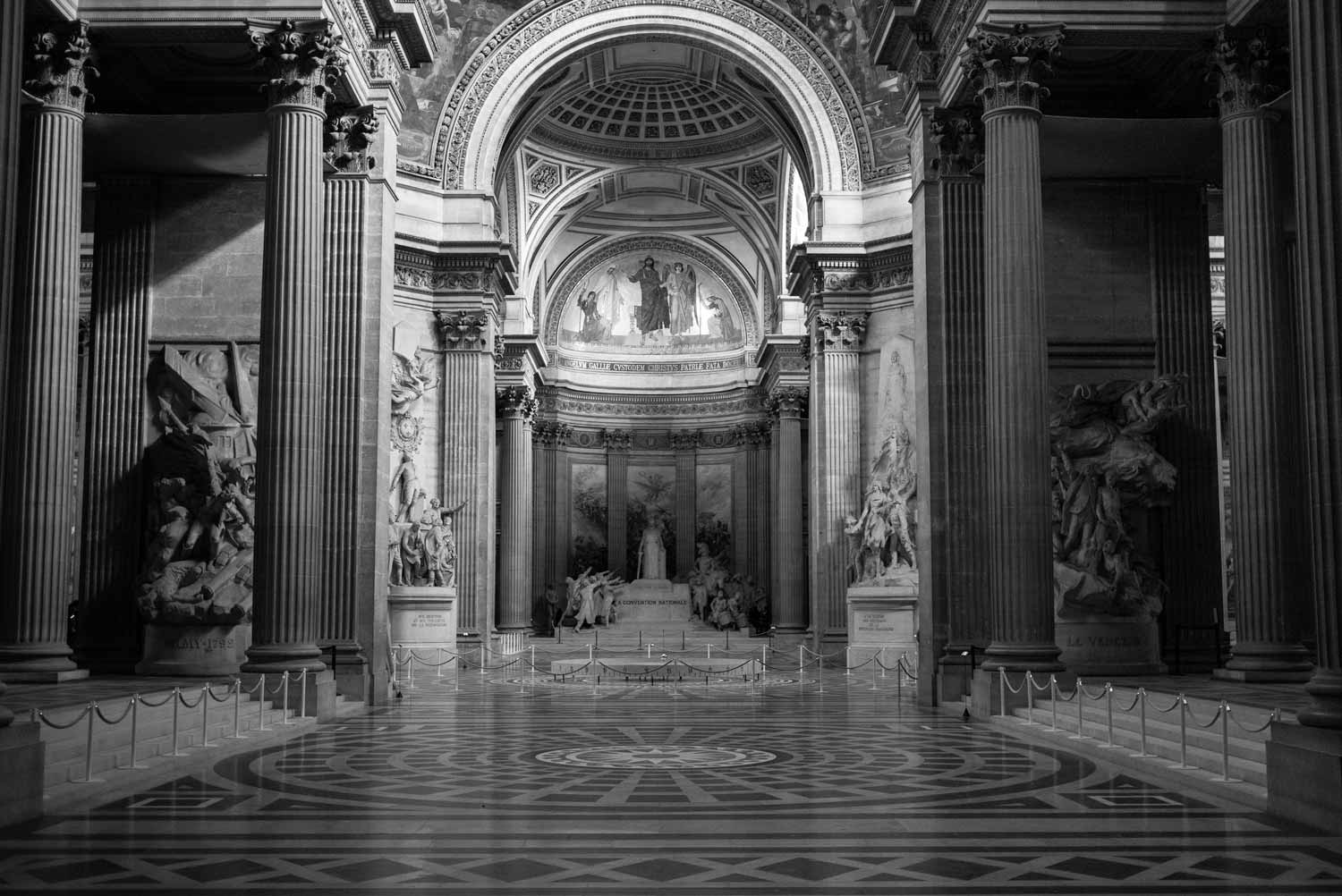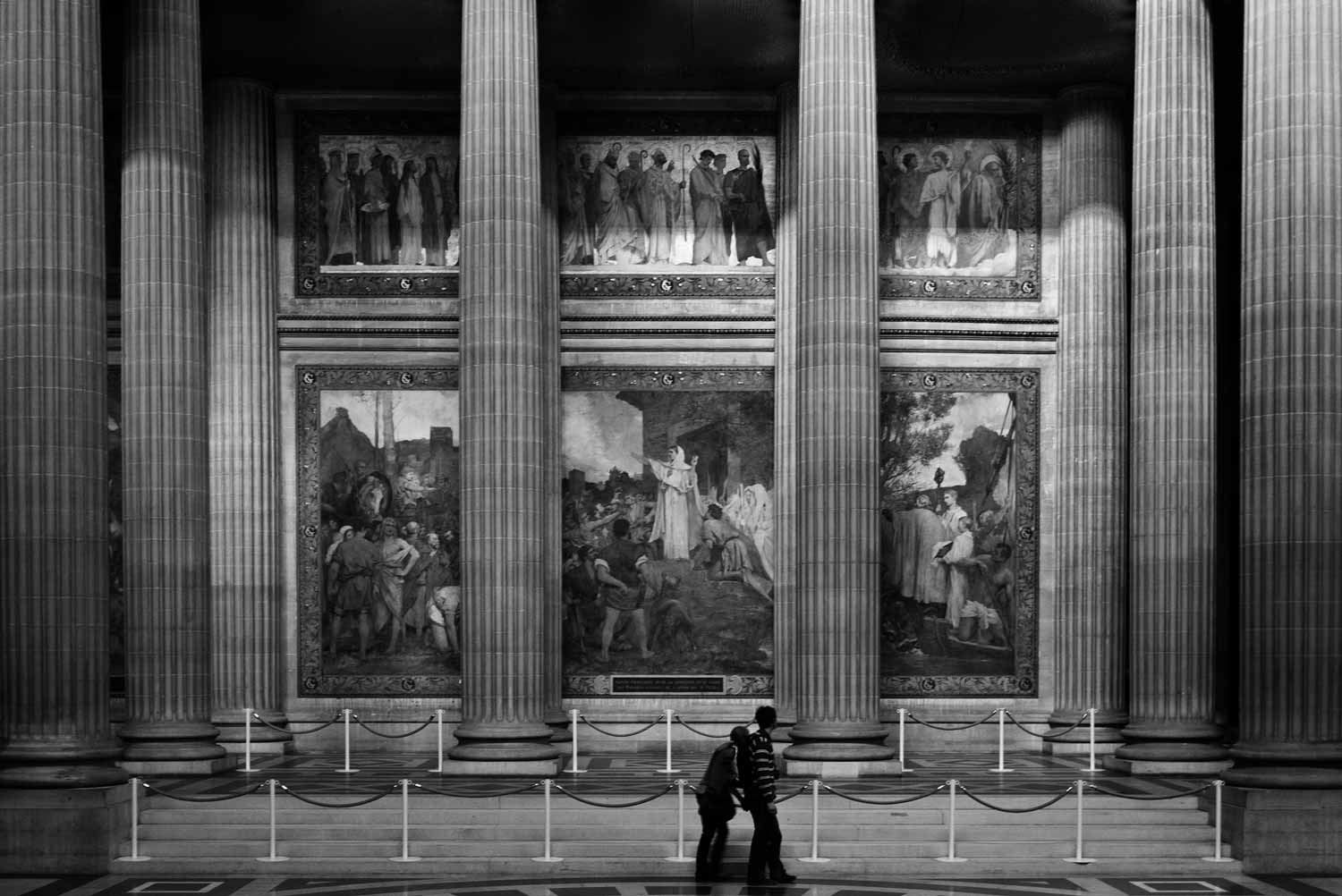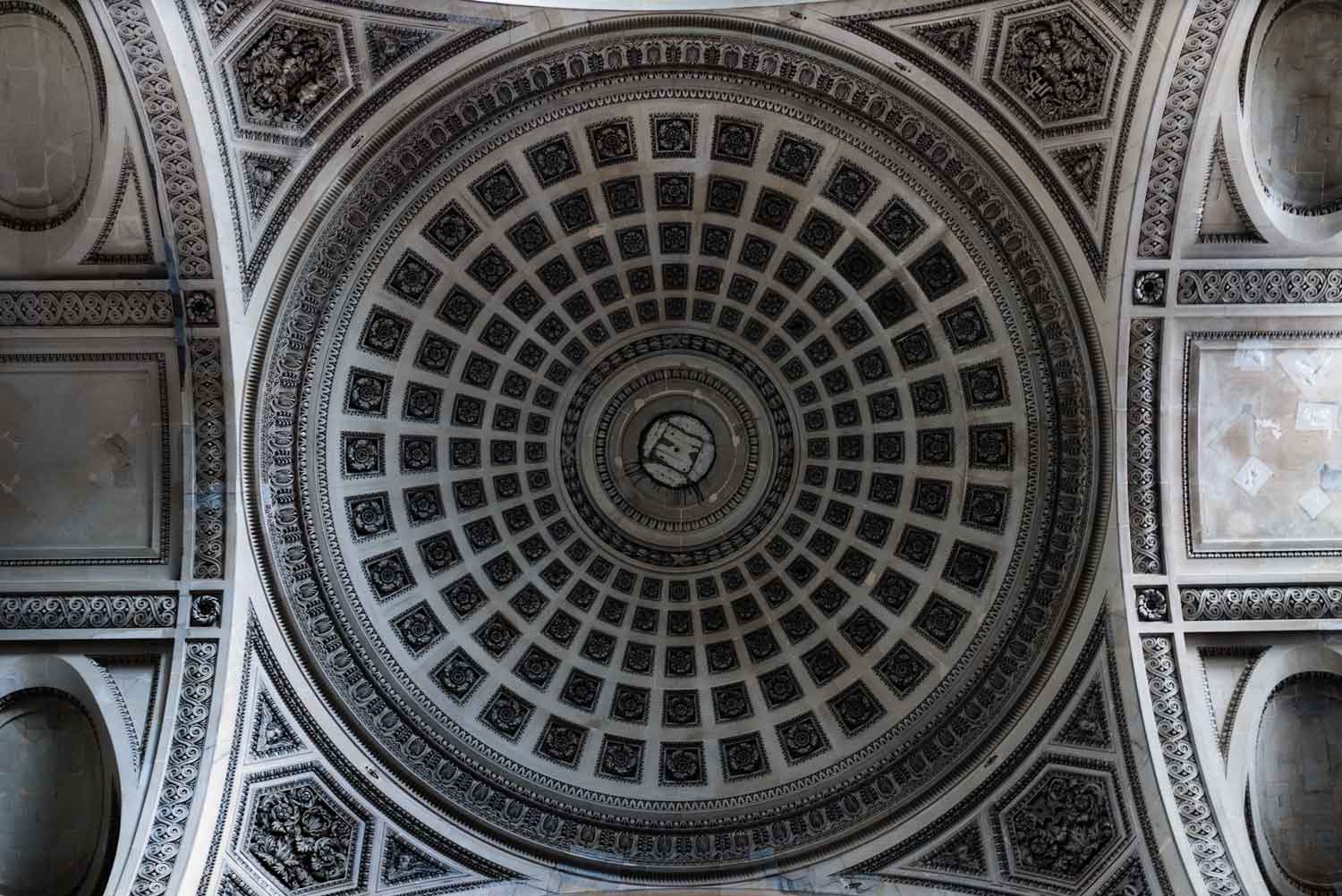The Pantheon – L’édition Française
12 Dec 2011

Looking down the length of the Pantheon.
The Pantheon. Imposing on the outside, a history lesson on the inside.
As per usual, I managed to sneak in with the last group of admissions for the day which worked out favourably as there were a low number of visitors at this time. Room to breath, although there’s plenty of that here in any case. Those with an aversion to stonework need not attend; there’s a lot of that matte white stuff. Especially in statue form, so, those with a fear of statues as well (officially known as ‘statue phobia’, no joke) should absolutely not attend.

A couple are dwarfed by the wall length paintings and murals that line the interior.
Throughout the various uses that the Pantheon has had in French history, it’s current usage is as a mausoleum for notable characters in the life and times of France. Make your way to the very end and journey down the tight stairwell into the crypt. Ducking around the various compartments will get you face to face (figuratively speaking) with the likes of Victor Hugo, Voltaire, or Mr and Mrs Curie. Staying top-side gives access to the previously mentioned statues along with assorted paintings and murals. There are a few hanging specimens but the impressive pieces line the walls from ceiling to floor.

The roof dome where Foucault proved in 1851 that the Earth spun on its axis.
For those scientifically minded, the Pantheon holds it’s place in history for more than being a resting place for the famous. In 1851, Léon Foucault carried out his famous experiment to demonstrate that the Earth wasn’t a lazy hunk of dirt; it actually spun on it’s axis. A replica of this still stands in place. By suspending a pendulum from the main dome and allowing it to swing freely throughout the course of several hours, it was easily seen to change its path and gave unequivocal proof of the Earth’s rotation.